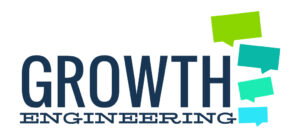How To Use The Engagement Spectrum
How engaged are your employees with their jobs? Do they know what your company stands for? Do they have a clear idea of their place in the bigger picture? If you can’t give a clear answer to any of these questions, how can you ever hope to make things better? Employee engagement has never been more important and the trends show that businesses aren’t doing enough to address the needs of their people. Measuring engagement has always been a tough job. Most companies have had to rely on quarterly employee satisfaction surveys which only show a small facet of the issue. Luckily, with Learning Management Systems becoming more advanced, business leaders have, for the first time, a real opportunity for measuring that engagement and making prompt changes. The Learning Management System can act as an indicator of engagement throughout the organization. If you have the right tools which let employees communicate and share their knowledge, you have several ways to make good use of their engagement spectrum.
The Engagement Spectrum
Everyone user on your Learning Management System will be engaged to a lesser or greater degree:
1. Actively Disengaged.
These employees want to undermine the training program and will go out of their way to derail it. They might leave angry feedback on an eLearning unit, or a sarcastic comment on a social post. You might think they are rebellious souls who don’t really belong in your organization (and sometimes that’s true), but they could be telling you something that you really need to know.
Take the time to listen to their misgivings and try to find out the reason behind their behavior. Getting rid of the person might stop them from converting other employees to their cause, but it won’t solve whatever issue that upset them in the first place.
2. Disengaged.
It’s easier to identify the disengaged learners from the actively disengaged ones. They are not interested in the training and simply won’t return after their first login. Indeed, some might never log in at all. This might be due to an issue with the platform itself. Expectations have gotten higher when it comes to user interface. If your platform looks dated and ugly, you’ll lose your learners before the even get near the training content.
If lots of your learners fall into this group, you have a bigger challenge on your hands, as it’s harder to find out what you can do to make it more interesting or relevant for them.
3. Compliant.
Compliance is the very least that any training manager should hope to get from their learners. At this point in the spectrum, the learner logs onto the system and completes their training. Compliant learners won’t return unless they have been invited to complete additional training. As far as the reports are concerned, these learners have been given the knowledge they need, but there’s no guarantee that the knowledge will translate into a behavioral change.
If most your learners fall into this part of the engagement spectrum, there’s a good chance that your learners view the Learning Management System as a means to an end, rather than something they need to engage with. The danger here is that this attitude might pervade other elements of the business, meaning you’ll never really get the best from anyone.
4. Engaged.
Platforms with a high percentage of engaged learners tend to use techniques like gamification to add an extra incentive for the learners to return on a regular basis. An engaged learner will log in frequently, even if they have no content left to consume. These engaged learners ask questions, share their perspectives, and give feedback on the learning assets. Since we only get 10% of our learning from the formal content(1), it makes sense to capture that intellectual capital and get the most value from the investment in the learning platform.
If your Learning Management System doesn’t have some social learning functionality, this will be very hard to achieve. If you do have these capabilities, but you’re struggling to elevate your learners to this level of the engagement spectrum, then you might need to rethink your engagement strategy.
5. Actively Engaged.
Learners who are actively engaged in their training are traditionally hard to come by. Like engaged learners, they will consume their learning content and regularly share their knowledge. They go one step beyond by contributing to the learning program in several ways.
Some of them might create their own learning assets and share them with their colleagues. They tend to be the first people to spot inconsistencies or outdated information in existing training collateral. Others might focus more on engaging the rest of the team, or challenging their fellow learners to improve their scores.
Actively engaged learners are a huge asset to any training program and it’s up to the training manager to spot them quickly and make the most use of their knowledge and energy. Some modern Learning Management Systems can grant ‘expert’ status to any individual on the platform, letting other learners find the answers they need more easily.
Final Word
Engagement with the learning program tells you a lot about the level of employee engagement as a whole. The trick is not to see the Learning Management System simply as a means for delivering knowledge. If you take the time to engage more employees in their training, you’re not just showing an interest in their professional development – you’re giving them a chance to contribute to the intellectual capital of the entire organization. That’s great news for everyone!
Reference:


